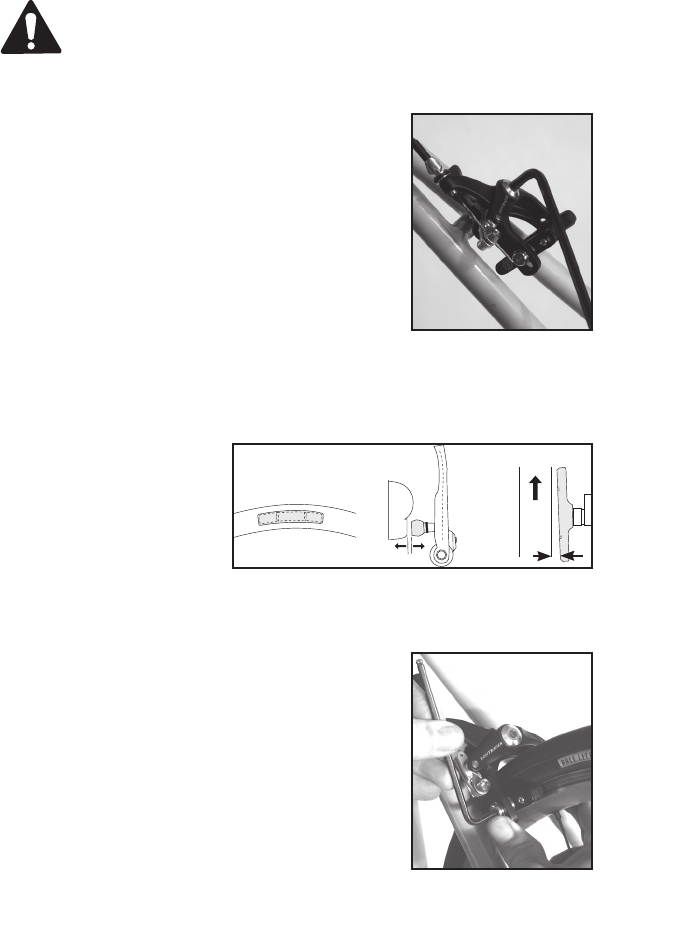
6
Brake pad holders have a front and rear. If the holder is facing the
wrong direction, the pad could slide from the holder when the brake is
applied. Make sure the Bontrager logo on the brake shoe holder is facing
up and that the open end of the holder faces the rear of the bicycle.
1. Center the brake. Loosen the brake attachment
bolt, move the brake until both pads are the same
distance from the rim, and retighten the attach-
ment bolt to 70-85 lb•in (7.9-9.6 Nm).
Small centering adjustments can be made by simply
rotating the center bolt with a 6 mm allen wrench
(Figure 8).
2. Loosen the brake pad attachment bolt.
3. Align the pad, and squeeze the brake (or the
brake lever) to hold the pad aligned against the
rim (Figure 9).
Toe-in prevents squealing, and is usually only needed
with new brake pads. To achieve correct toe-in, you can put a business
card between the rim and the trailing edge of the brake pad prior to
holding the pad against
the rim.
4. Tighten the pad attach-
ment bolt (Figure 10)
to 40-60 lb•in (4.5-6.8
Nm).
5. Repeat for the other pad.
With new cables or
housing, ‘stretch’ the
cables (compress the
housing). Apply the brake fully while you ‘stroke’
the housing. Use your ngers to create a tighter-
radius curve in the housing, then move the curve
back and forth along the entire length of each piece
of housing.
Figure 0 Pad attach-
ment bolt
Figure 8 Center the brake
Figure 9- Brake pad alignment
A: Brake pad aligned with rim surface
B: Brake pad and rim parallel
C: Brake pad toe-in
A
B
C
0.5-.0 mm


















